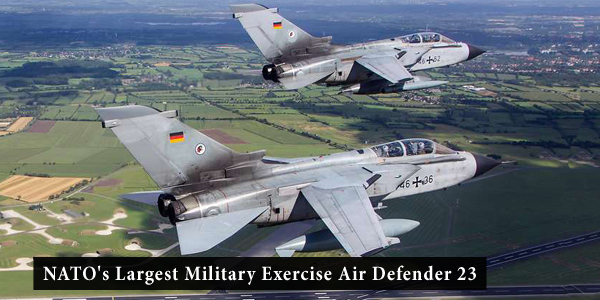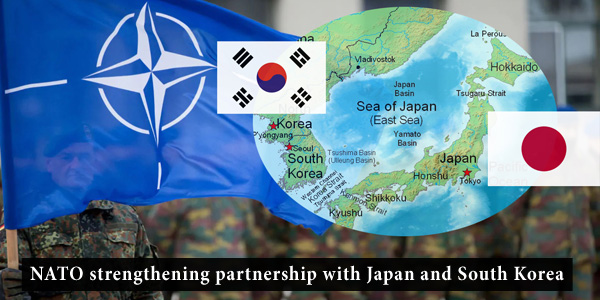Overview of NATO Defense Spending (2014-2023)

The North Atlantic Treaty Organization (NATO) members have seen exponential growth in their defense expenditures in a short period following the Russian invasion of Ukraine. Estimates released by NATO show that at least 11 of the 31 member states are now meeting the Alliance’s spending goals.
The NATO member states have been steadily increasing their overall defense spending since the Russian forces annexed Ukraine’s Crimean Peninsula in 2014. The same year, NATO set a defense spending goal for its member states which encourages all members to spend no less than 2% of their annual GDP on defense. At the time of its inception, only three of the 28 member states were sustaining the defense spending threshold level. Ten years into the implementation of NATO’s minimum defense spending threshold, 11 of the 31 allies have been able to reach the target with seven of them reaching the target in 2022, largely in the wake of Russia’s full-scale invasion of Ukraine.
The recently released data show that the largest increase in NATO’s overall defense spending came after the Russian invasion of Ukraine in 2022. The data has been based on reported figures by each member state’s defense ministry and includes all the expenditures.
NATO’s Definition of “Defense Spending”
NATO defines defense spending as the payments made by a national government to meet the needs of its armed forces. Based on this definition, the official spending only counts the payments made by a country’s central government which are channeled through a country’s defense ministry toward armed forces as defense expenditures.
The Alliance further defines armed forces to include land, maritime, and air forces as well as joint formations, such as administration and command, special operations forces, military medical service, logistic command, space command, and cyber command. In some but not all cases, interior troops, national police forces, anti-terrorism forces, and coast guards are also defined as a part of a country’s armed forces.
Any spending made by the government to enhance the capabilities of these departments is also considered defense spending according to NATO. Retirement pensions made directly by the government to retired military and civilian employees of military departments and for active personnel are included in the NATO defense expenditure. Expenditures for stockpiling of war reserves equipment or supplies for use directly by the armed forces are also included.
 U.S. Air Force Chief Master Sgt. David Hoffman, chief of operations, assigned to the 165th Communications Squadron, 165th Airlift Wing, Georgia National Guard, wears an exercise Air Defender 2023 morale patch on his right sleeve during the Nation's Day celebration hosted June 10, 2023 at Wunstorf Air Base, Germany. (Image Credit: U.S. Air National Guard/Master Sgt. Caila Arahood)
U.S. Air Force Chief Master Sgt. David Hoffman, chief of operations, assigned to the 165th Communications Squadron, 165th Airlift Wing, Georgia National Guard, wears an exercise Air Defender 2023 morale patch on his right sleeve during the Nation's Day celebration hosted June 10, 2023 at Wunstorf Air Base, Germany. (Image Credit: U.S. Air National Guard/Master Sgt. Caila Arahood)
Expenditure for the military component of mixed civilian-military activities is included when the military component can be specifically accounted for or estimated. These include airfields, meteorological services, aids to navigation, and joint procurement services. A country’s defense expenditures also include Research and Development (R&D) costs, including the cost of projects that do not successfully lead to the production of equipment.
Military equipment and financial assistance provided from one ally’s defense ministry to another are included in the defense expenditures of the donor but not in the recipient. The money provided by government departments other than the Ministry of Defense, through other international organizations, or in the form of direct military aid, does not count as defense expenditure.
NATO uses the U.S. dollar as a common currency for the Alliance to denominate defense expenditures and the exchange rates published by the International Monetary Funds (IMF) are applied to convert expenses into the U.S. dollar denomination.
Defense Expenditure of NATO Countries
NATO’s ten-year (2014-2023) defense spending data revealed that despite a sharp increase in defense spending by several members of the alliance, many NATO member states have failed to meet the threshold of defense spending, which is 2% of the GDP. The overall median defense spending remained at 1.87% of the overall GDP in 2023.

In the case of large European economies, such as France and Germany, it can be concluded that despite spending enormous amounts spent on military modernization and defense procurement, the sheer scale of their GDP limits the ability to meet the target. All NATO member states have achieved the target of spending 20% of their defense budgets on procuring new equipment. Twelve of the 31 member states spent more than 1.5% of the share of their GDP on defense.
Since the Russian invasion of Ukraine started, NATO’s overall defense spending has seen an 8% increase in real terms, which remained at less than 2% before the invasion. The largest share of the new defense spending has been focused on the procurement of new military equipment. NATO’s overall spending on procurement of new weapons and defense systems has seen a real growth of 24.9% since the war in Ukraine started in 2022.
In 2014, NATO members were collectively spending $910 billion annually on defense, but by 2023, this amount surged to $1.1 trillion. The U.S. defense spending has grown in the last decade from $660 billion to $743 billion in 2023. Meanwhile, the defense spending of the rest of NATO saw a rapid growth in defense spending rising from $250 billion in 2014 to $356 billion in 2023. Some of that growth was attributed to the inclusion of three new NATO members in 2017 - Macedonia, Montenegro, and Finland.

Poland holds the distinction of being the largest defense spender in NATO in terms of defense spending as a share of its GDP. Poland is expected to spend 3.9% of its GDP on defense in 2023. The U.S. ranks second spending 3.49% of its GDP on defense, followed by Greece at 3.01%, Estonia at 2.73%, and Lithuania at 2.54%. Luxemburg is the only NATO member state that spends less than one percent of its GDP on defense standing at 0.72%. It is also the smallest spender, followed by Belgium at 1.13%, Spain at 1.26%, Turkiye at 1.31%, and Slovenia at 1.35%.
Geographical Factors in NATO’s Defense Spending
The geographical position of a NATO member played an important role in determining the increase in its defense spending, particularly against the backdrop of the ongoing Russia-Ukraine war. With the U.S., UK, and Greece being exceptions, most of the NATO member states that saw an exponential increase in their defense spending were either former Soviet Union states or countries in the close geographical vicinity of Russia.
Hungary, Lithuania, Estonia, Poland, Latvia, Slovakia, and Romania were among the European NATO member states that reached the minimum defense spending threshold. For the first time in NATO’s history, Poland become the only European country that is expected to take over the U.S. in terms of defense spending compared to its GDP. In real terms, however, Poland’s defense spending remains much different than the U.S. which is expected to spend $860 billion in defense expenditure this year, dwarfing Poland's $29 billion projection.
 NATO fighter jets conducting air policing operations. (Image Credit: Twitter/@SHAPE_NATO)
NATO fighter jets conducting air policing operations. (Image Credit: Twitter/@SHAPE_NATO)
Finland and Sweden applied to become part of the NATO alliance shortly after the Russian invasion of Ukraine in 2022. Finland’s accession into the alliance was approved in April 2023. Finland shares one of the largest borders with Russia stretching up to 1,340 kilometers. Historically, Finland has kept a policy of neutrality, however, this has not stopped the Scandinavian state to focus on building up a strong military force and innovating new defense technologies. After joining the Alliance, Finland found itself among the group of NATO member states with defense spending meeting 2% of the GDP criteria.
Sweden’s NATO bid initially faced some hindrances due to objections raised by Hungary and Turkey but the issues were resolved at NATO’s annual summit 2023 in Vilnius, Lithuania. Sweden is gradually being integrated into NATO and is set to become the 32nd country to join the military alliance.
Future of NATO’s Defense Spending
Defense spending and the Alliance’s ever-increasing demands for minimum spending thresholds have been a source of debate of among the member states for decades. Substantial progress was made in this regard at the NATO Summit in Vilnius this year to help the weaker economies catch up in defense spending.
NATO’s increased focus on pushing Allies to spend at least 20% of its defense budget on major defense equipment has raised further debates among the allies on the beneficiaries of such policies. Despite facing a domestic backlash, several governments of the NATO member countries are determined to overhaul their military outlook amid the changing security environment. According to NATO’s figures, this year all members are expected to exceed the guideline of 20% spending of the defense budget on defense procurement for the first time in the Alliance’s history.
 Karel Doorman-class multi-purpose frigate HNLMS Van Amstel (F831) together with NH90 helicopter. (Image Credit: SHAPE NATO/Twitter)
Karel Doorman-class multi-purpose frigate HNLMS Van Amstel (F831) together with NH90 helicopter. (Image Credit: SHAPE NATO/Twitter)
ALSO READ:
Regions
Issues

















 Highlights of NATO's Largest Military Exercise Air Defender 23
Highlights of NATO's Largest Military Exercise Air Defender 23 NATO strengthening ties with Japan and South Korea
NATO strengthening ties with Japan and South Korea







